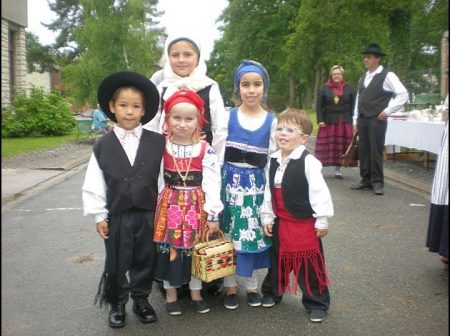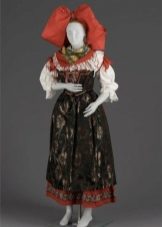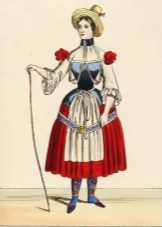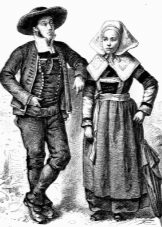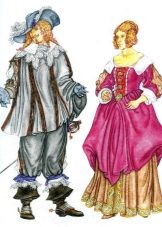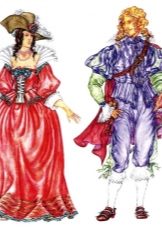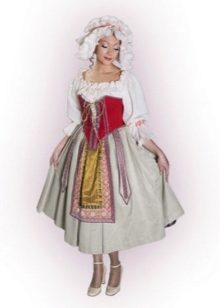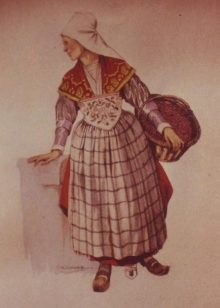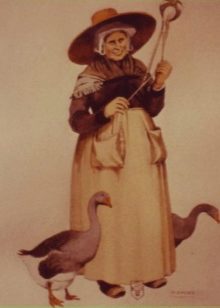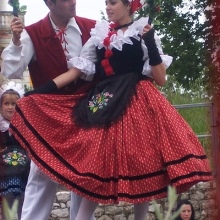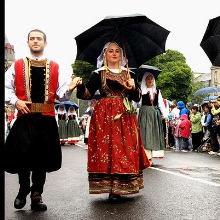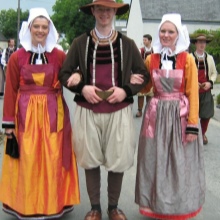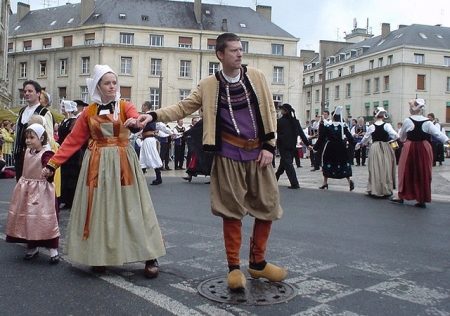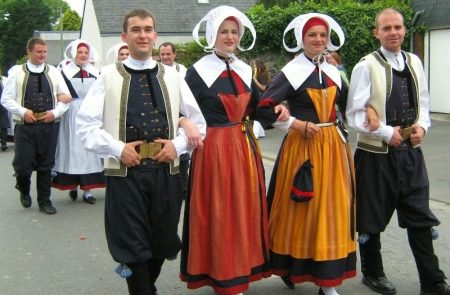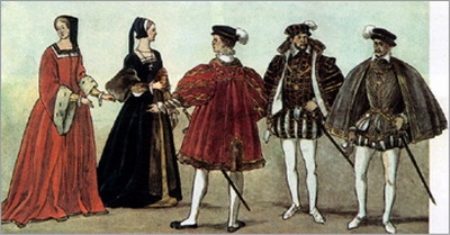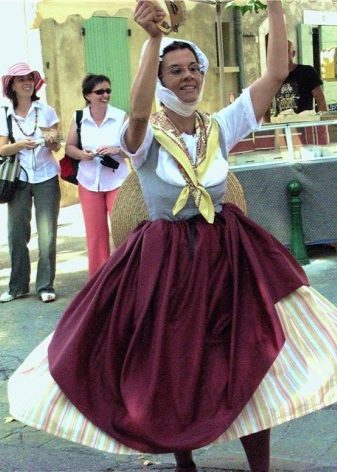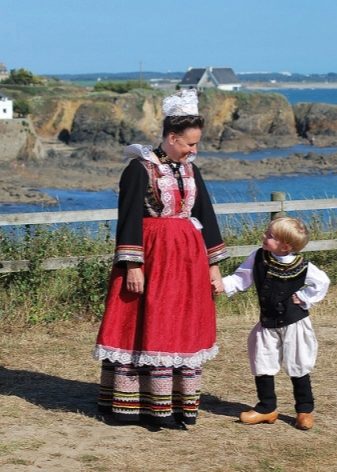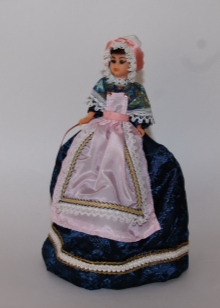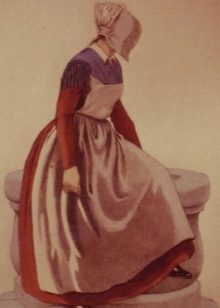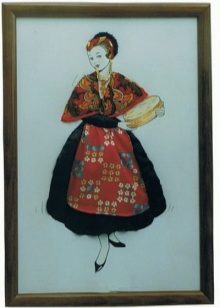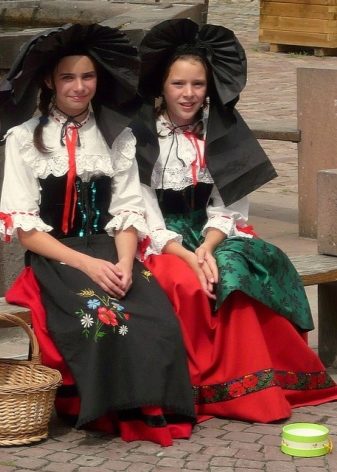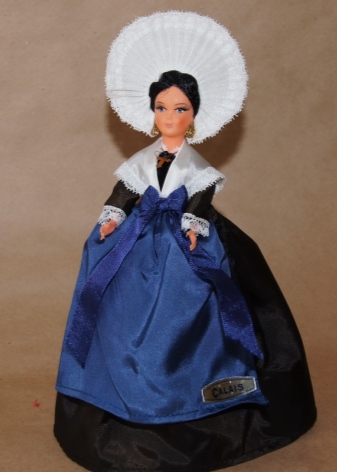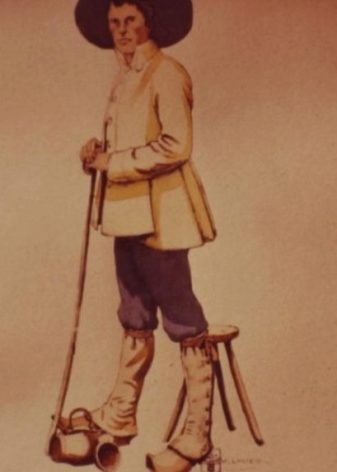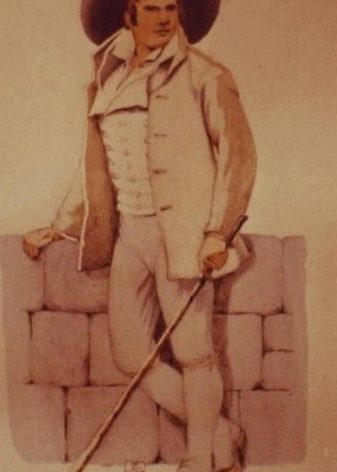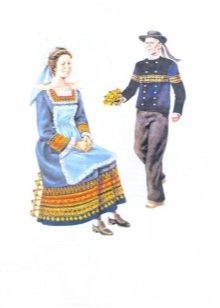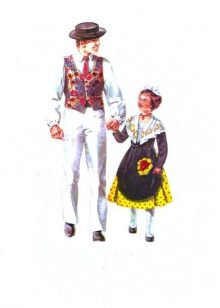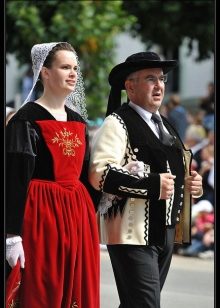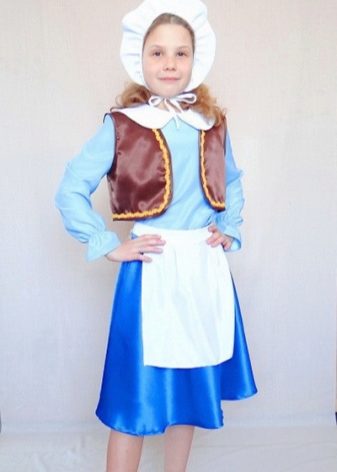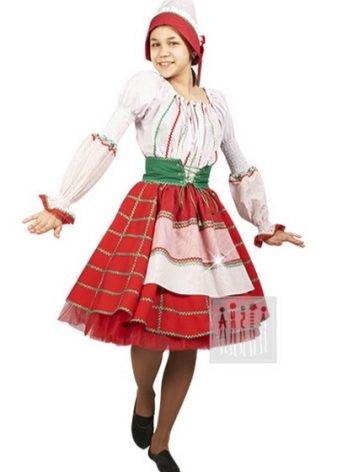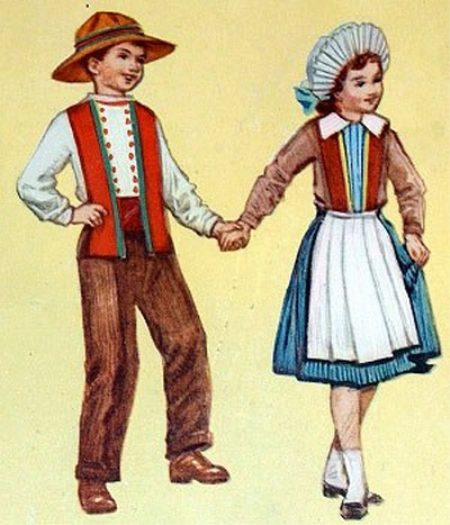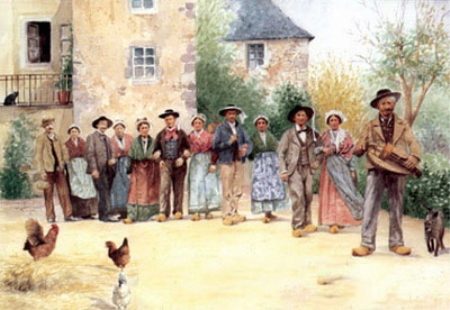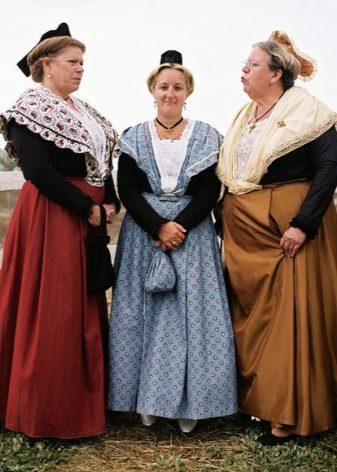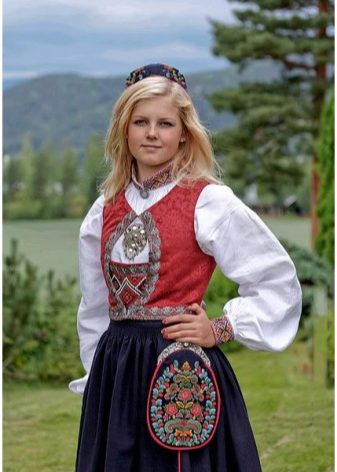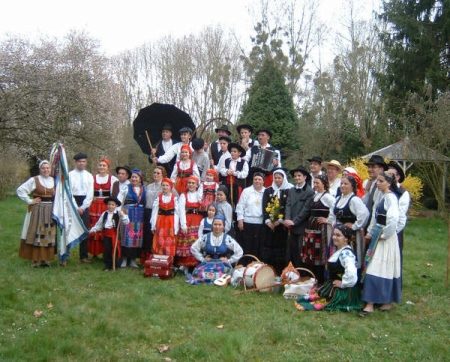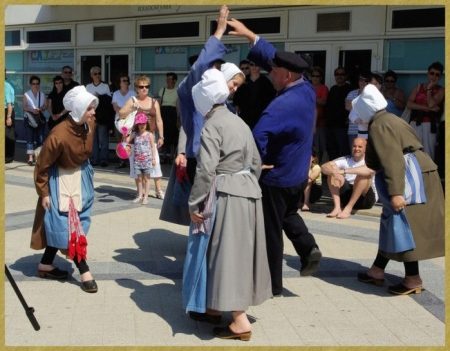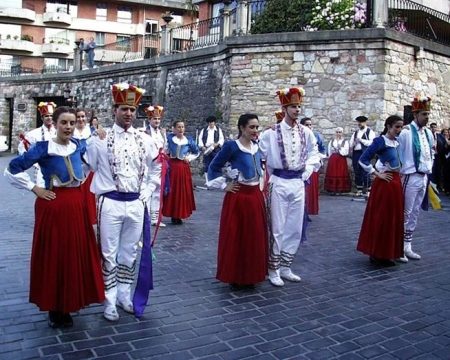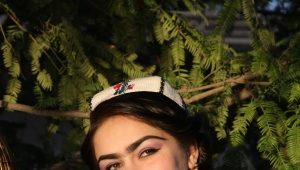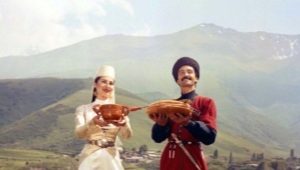French national costume
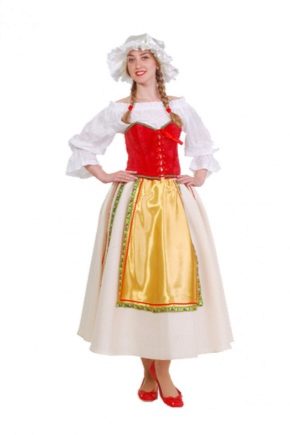
The culture of another country is always of great interest to art lovers, travelers, and even ordinary people interested in different cultures. National costumes of different nations are a vast topic that can tell about the traditional features of the inhabitants of a particular region.
We decided to dwell on the French national costume, choosing it because the French have always been trendsetters.
A bit of history
The main features of the French national costume began to form in the distant 16th century. These were the prerequisites of corrugated collars, shortened men's trousers, cloaks, lace details and a variety of embroidery.
More clearly, elements of the traditional costume of France were formed more as early as the 17th century. Long shirts, ruffled skirts, stockings, trousers, neckline, etc. came to the wardrobe. Clothing was made from materials such as wool and canvas of various designs. This continued until the end of the 18th century.
In the 19th century, they began to use fabrics of factory production. Rural tailors were usually engaged in sewing, mostly for lunch, housing or a small fee.
After the Great Revolution in France in the national costume began to change. It was connected, first of all, with the growth of welfare, as well as with the appearance on sale of new factory fabrics - cloth and silk.
So there were holiday dresses, of course, they were influenced by urban fashion. The shape of the apron, skirt, headdress, and the cut of the corsage differed among the provinces. This was especially noticeable in the color elements. Even within the province, costume elements were often distinguished.
At the end of the 19th century, urban costume began to appear everywhere. However, for a long time, such an element as a headdress, especially in remote areas or in the Alps region, remained in use.
Features
Colors and shades
Among the colors for clothing predominantly calm and restrained shades prevailed. Among them are gray, brown, white. These colors were typical for both male and female costume.
Of course, women's wardrobe items were sometimes brighter shades. In addition to standard colors, the skirt could be blue, red, less often black. Aprons were also red or blue shades, as well as yellow. Corsage - purple, burgundy, brown or striped.
Fabric and cut
In peasant clothes, a thinner canvas was used mainly for holiday clothes, such as skirts or shirts, as well as linen. The rough canvas was intended for casual wear.
If we talk about outer clothing, then it was sewn from more dense and warm materials, for example, cloth, adding cotton or canvas threads to it.
After the revolution, the usual materials were replaced by factory fabrics, among which was silk.
Varieties
Female
The national women's costume consisted of a skirt with numerous assemblies, a wide jacket with long sleeves and a buckle at the collar and a scarf or kerchief draped over shoulders. The skirt, as a rule, was long, approximately to the middle of the shin, with a jacket worn down, falling from the top of the skirt. Kofta braced at the waist with an apron ribbon, which was a little shorter than the skirt. The scarf was tied on the chest or lay under the bib of the apron.
Mandatory for the costume was a corsage. The headdress of a woman is a cap, on top of which another scarf or hat was put on. The cap was worn at home and on the street.
Male
The traditional male costume of the 19th century consisted of the following clothes: pants, shirt, leggings, neckerchief, vest or jacket.
Until about the 1930s, peasants wore short pants up to their knees, along with leggings or woolen stockings, which were tied under a knee with a wool garter, usually blue or red. Often the leggings were of the same material as the pants.
Already after the 30s, long, narrow pants appeared. The shirt already had a turn-down collar. The cuffs and collar were initially tightened with two ribbons, and later they were fastened with buttons. Additionally, they also wore a scarf. Together with a shirt, they also put on a vest, of a light color with two rows of metal buttons. Over the jacket was worn, it could be short or elongated.
The shirt entered everyday life at the end of the 18th century. She was straight silhouette, about mid-thigh, with assemblies on the sleeves and the gate. She sewed from canvas.
Initially, the shirt was a festive clothing for the peasants, and after the revolution of 1830, it began to be worn in the city by artisans and workers. For the peasants, it still remained a traditional dress for holidays and folk festivals.
In the 19th century and the beginning of the 20th century, the shirt already became working clothing, but still retained its position in the countryside. In winter, shepherds wore a wide cape of goatskin or coarse fur on top of it.
Until now, sometimes you can see the classic shirt on the artists.
If we talk about the headdress, then in the 18th century it was a triangle for a peasant, she was worn until the beginning of the 19th century. She was replaced by a round wide-brimmed hat, a straw one - for summer, a felt one - for cold weather.
Men - inhabitants of the coasts wore a hat-cap made of wool, similar to the Phrygian cap. Such a hat-cap was decorated with a pompom hanging from behind.
Child
Children's costumes at that time were not much different from adults, everything depended on the sex and age of the child.
For girls - a skirt, were possible and shorter options than for adults. The skirt was supplemented with an apron and a shirt, the cap was obligatory.
For boys - shortened pants, elongated shirt and vest. Together with the pants they put on gaiters, the head-dress was similar to the adult male.
Accessories and shoes
Traditional shoes - shoes, carved out of wood. These shoes were designed for both men and women. It was worn for a long time.
If we talk about accessories, then gradually women used lace details to decorate clothes, as well as more elegant silhouettes in clothes. So they tried to emphasize their femininity.
Openwork sleeves from elbow to wrist - another one of the accessories that is inherent in the fashionistas of that time. Various hairpins that hid under the headgear looked elegantly on the fair sex.
Modern models
In the modern world, residents often try to revive traditions, arranging various festivals and recreating events, also organizing costume contests.
Basically, the differences in costumes consist of decoration, embroidery, headwear, sometimes even fancy shapes, corsage decorations, fabrics and colors.
Of course, mostly traditional costume is worn by artists or patriots at festivals. So, residents demonstrate the originality of their area.
In modern models there are brighter extravagant shades, new forms and details.
